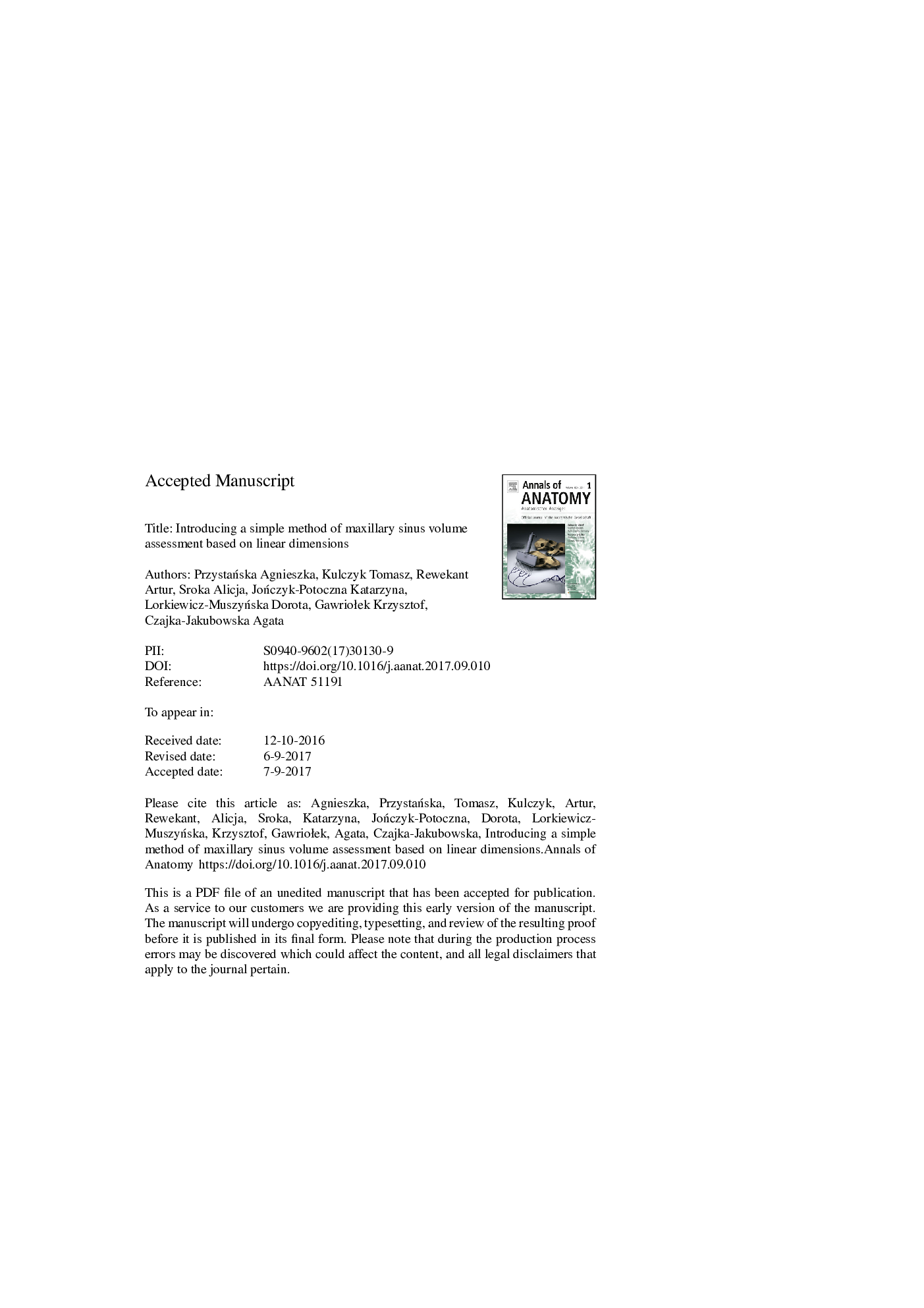| Article ID | Journal | Published Year | Pages | File Type |
|---|---|---|---|---|
| 8460370 | Annals of Anatomy - Anatomischer Anzeiger | 2018 | 15 Pages |
Abstract
The study was performed using samples of CT scans of pediatric patients age 1-17. The dimensions (maximal width, maximal height, maximal length) were used for manual calculations. For the automatic volume calculation, the CT Image Segmentation algorithm (Syngo Via for Oncology, Siemens) was used. Pearson's correlation coefficient was applied to analyse the interrelationship between automatically and manually calculated volume of maxillary sinus. It was statistically established that the “sphere”, “pyramid” and “mean” manually calculated maxillary sinus volume were accurate and strongly correlated with the automatically estimated maxillary sinus volume. The volume of the sphere corresponds better with the automatic measurements than the volume of the pyramid. The variations are significant and they were made reliable with the application of a statistical test. It is quick and easy to calculate the maxillary sinus volume based on its linear dimensions instead of applying advanced software. The manual method for maxillary sinus volume calculation requires three linear measurements of the sinus (length, width, and height) and can be recommended if the automatically estimated volume cannot be obtained.
Related Topics
Life Sciences
Biochemistry, Genetics and Molecular Biology
Cell Biology
Authors
Agnieszka PrzystaÅska, Tomasz Kulczyk, Artur Rewekant, Alicja Sroka, Katarzyna JoÅczyk-Potoczna, Dorota Lorkiewicz-MuszyÅska, Krzysztof GawrioÅek, Agata Czajka-Jakubowska,
